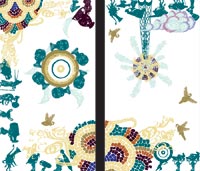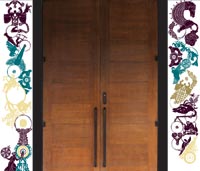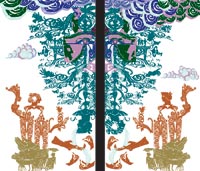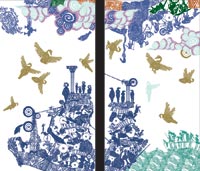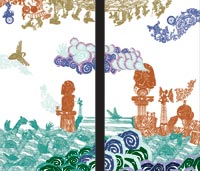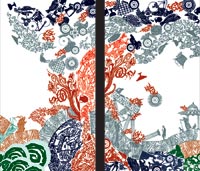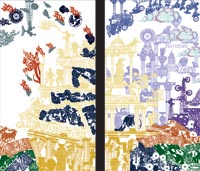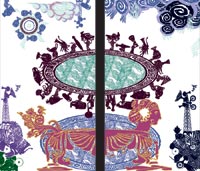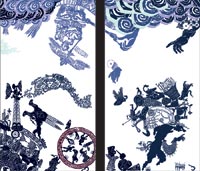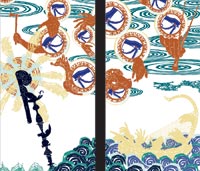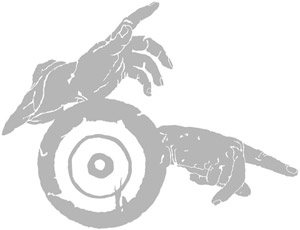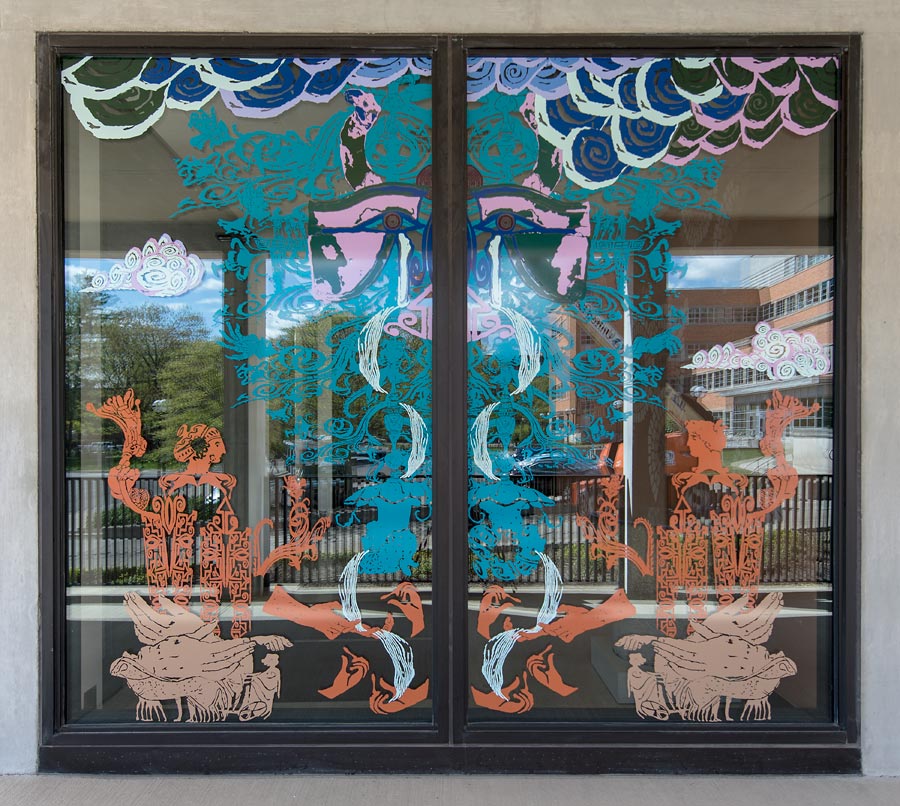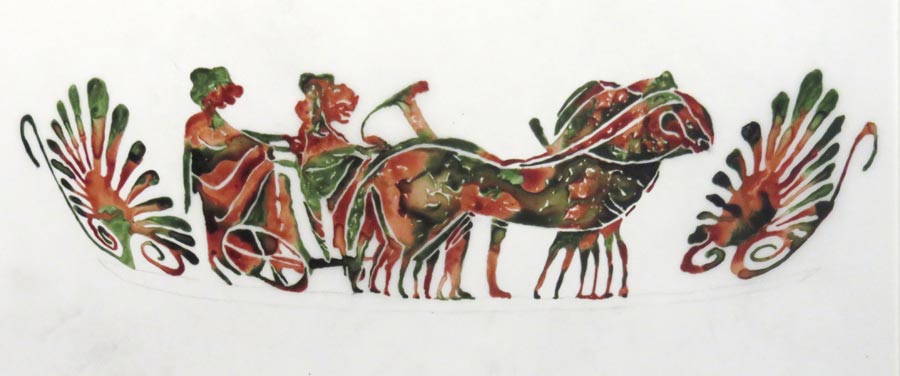The first pair of windows on the south side of the portico looks into the museum’s entrance foyer, centered on its imposing interior doorway. Behind those doors lies the power of the classical past, a specific set of cultures from a small corner of the universe, the ancient Mediterranean, revered by European societies as the home of our cultural ancestors. An inverted tree protects that entrance with its watchful eyes. Tears trickle through its branches to a cluster of hands that catch them below. Like the Yoruba ancestral figure across the street at UMMA, this presence blurs the distinctions between the animate and the inanimate, archaeology and ancestor worship. Two smaller figures stand to either side below the tree, heads from two Greek vases mounted on the scrollwork of a Parthian frieze, cradled in hands plundered from a Flemish Madonna painting, borne on a chariot from a 6th c BCE Attic skyphos.
